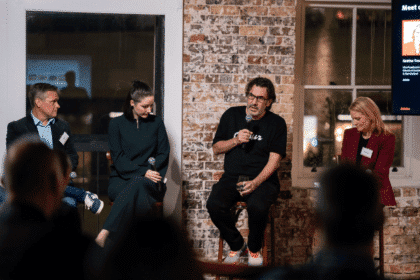In this opinion piece, Criteo commercial director ANZ Colin Barnard shares his advice for best advertising to ‘the purpose generations’.
In August, almost 200 leading business executives – including Amazon CEO Jeff Bezos, Apple CEO Tim Cook, JPMorgan Chase CEO Jamie Dimon and IBM CEO Ginni Rometty – made news headlines by offering a new definition for the purpose of a corporation that challenged long-held corporate orthodoxy.
These chief executives, collectively known as the Business Roundtable, argued that the modern corporation should no longer exist only to deliver value to stockholders – rather, it should serve stakeholders including customers, employees, partners, communities, and yes, shareholders.
As commercial director at my company, my responsibility is to help retailers and brands of all sizes with the technology they need to better know and serve their customers. While Business Roundtable’s statement is an encouraging signal from a hugely influential group of business leaders, it is merely putting into words what a great many Australian brands have already recognised – and acted upon – for years. Many marketers have long understood that to connect with today’s consumers, businesses need to have purposes beyond those that are tied to financial results.
Here’s proof: according to a 2019 Criteo ‘Why We Buy’ survey, 40 per cent of Australian shoppers will go so far as only choosing a brand or product that aligns with their values.
The Purpose Generations
The influence of millennials and Gen Z consumers is a significant driver of purpose-led business practices. Gen Z are empowered, connected, practical, empathetic self-starters who want to stand out and make a difference in the world.
As shoppers, Gen Z demands that brands be both socially accountable and imbued with a sense of authenticity in their interactions. A 2019 study conducted by The Center for Generational Kinetics (commissioned by WP Engine) found that 63 per cent of Gen Z are more likely to buy from companies that contribute to social causes, as evident through the rise of Australian social enterprises like Thank you and Who Gives a Crap.
Given these major shifts in the consumer mindset, how can brands bring purpose into their work to create a better advertising experience for the consumer ecosystem?
1. Walk the walk. Brand marketers must not limit themselves to, say, mission statements and other PR-driven tactics that are light on action. Consumers are looking for brands to take meaningful steps that have tangible results. To achieve this, ensure that your brand embodies a purpose and that it touches all parts of your organisation, from the leadership team downward.
2. Create a dialogue around purpose. Advertising should enter the picture once purpose has been established as your organisation’s North Star. This helps ensure that your communications are credible and authentic. Transparency is essential, too. Build trust by engaging your consumers on social media and holding yourself accountable. Gen Z is fiercely committed to authenticity when considering brands. For example, let’s revisit the WP Engine study: 75 per cent of Gen Z trust a company more if the images they use are not photoshopped. An authentic, well-communicated purpose can engage Gen Z and millennial consumers in particular and increase the likelihood of a purchase.
3. Hit purpose passion points. Make sure that your purpose-driven campaign meets young consumers in their cultural space and addresses the issues they care about. Give them something to engage with and share. While it’s important to define your organisation’s purpose with something that acts in alignment with your history and values – think about powerhouse closing brand, Patagonia and the environmental causes it supports – in an era defined by personalisation, many young consumers expect brands to meet them halfway. Make sure that your organisation’s purpose and marketing hit their passion points while being authentic to the brand’s core advocates.
On September 20, millions of people around the world participated in the Global Climate Strike. Australia kicked off the protests with 300,000 people attending 100 rallies across the country, mostly younger generations including Australian school-age children. Their unofficial leader was 16-year old Greta Thunberg. Today’s youth are driven by purpose in ways that perhaps some earlier generations weren’t and they’re not looking at just political leaders for solutions. Many young consumers believe brands have the power to impact positive social change and are more likely than other generations to consider company values when making purchasing decisions. The brands that get this – the ones that make purpose their North Star, walk the walk and create authentic conversations to reach consumer passion points – are more likely to succeed. They understand that purpose marketing can’t be just a glossy coat of paint.








